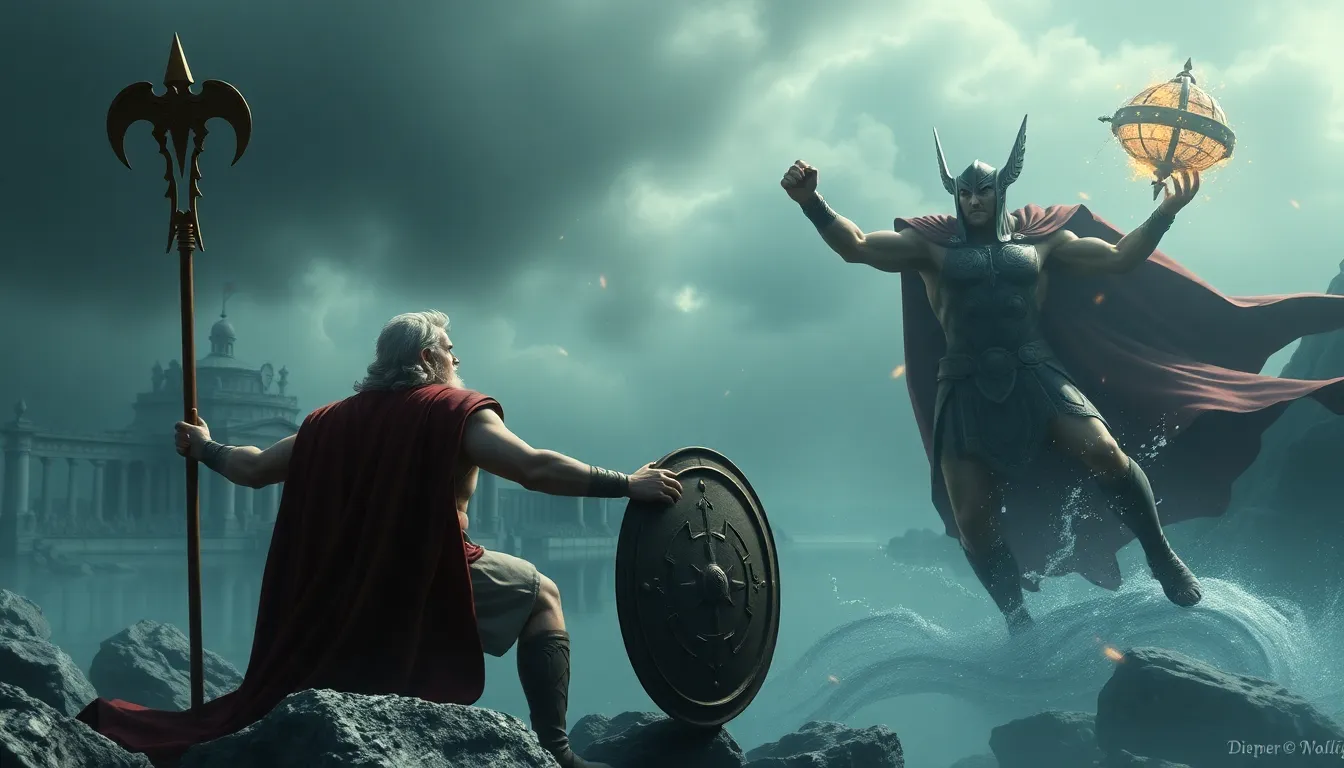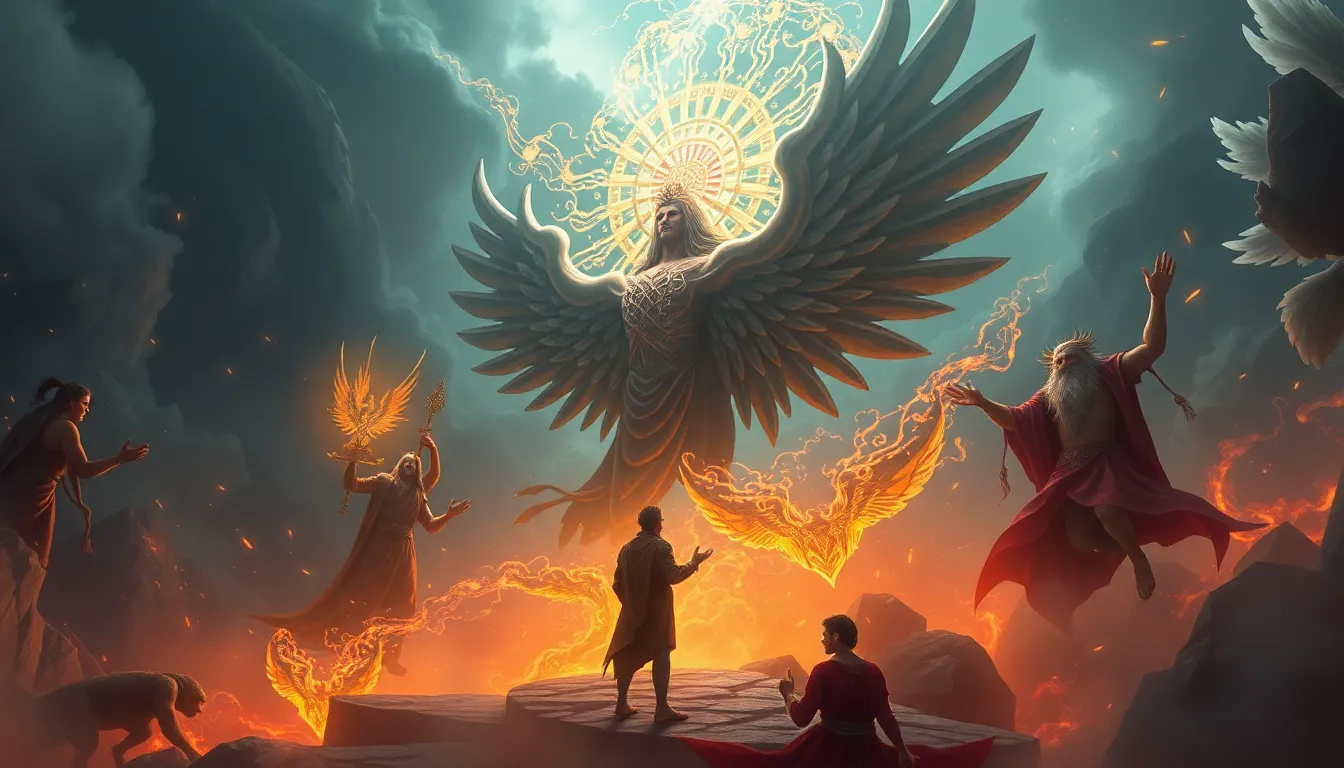From Hercules to Thor: Legendary Heroes and Their Divine Trials
I. Introduction
Throughout history, cultures around the globe have shared stories of legendary heroes, figures who embody the ideals and values of their societies. These heroes, often possessing extraordinary abilities or divine connections, face immense challenges and trials that test their mettle and shape their destinies. From ancient Greece to the realms of Norse mythology, the concept of divine trials is a recurring theme that serves to highlight the hero’s journey, their growth, and their ultimate triumphs.
The purpose of this article is to explore the various challenges faced by heroes across different cultures, focusing on the iconic figures of Hercules and Thor. By examining their trials and tribulations, we gain insight into the universal themes of heroism, sacrifice, and the interplay between divine intervention and human agency.
II. The Hero’s Journey: A Brief Overview
A. Definition of the Hero’s Journey
The Hero’s Journey, a concept popularized by Joseph Campbell in his work “The Hero with a Thousand Faces,” refers to a common narrative structure found in myths and stories across various cultures. It typically involves a hero who embarks on an adventure, faces conflict, achieves victory, and returns transformed.
B. Common Elements Across Cultures
- Call to Adventure: The hero is summoned to undertake a quest.
- Trials and Challenges: The hero faces obstacles that test their resolve.
- Transformation: The hero emerges from their journey changed, often wiser or more powerful.
- Return: The hero returns home, bringing back knowledge or a boon for their community.
C. Importance of Trials in Heroic Narratives
Trials are fundamental to the hero’s journey, as they serve to:
- Demonstrate the hero’s strength and capabilities.
- Highlight the values and morals of the culture.
- Facilitate personal growth and transformation.
III. Hercules: The Greek Demigod and His Twelve Labors
A. Background of Hercules: Birth and Divine Parentage
Hercules, known in Greek mythology as Heracles, is the son of Zeus and the mortal Alcmene. His divine parentage bestowed him with immense strength, but also led to a life filled with challenges and trials, often incited by Hera, Zeus’s wife, who was jealous of Hercules’s existence.
B. Description of the Twelve Labors
To atone for a tragic mistake that led to the death of his wife and children, Hercules was tasked with completing twelve seemingly impossible labors:
- The Nemean Lion: Defeating an invulnerable lion and wearing its skin as armor.
- The Lernaean Hydra: Slaying the multi-headed serpent whose heads would regenerate when cut off.
- The Ceryneian Hind: Capturing the sacred deer of Artemis without harming it.
- The Erymanthian Boar: Capturing a giant boar alive and bringing it back to King Eurystheus.
- The Augean Stables: Cleaning the stables of King Augeas in a single day.
- The Stymphalian Birds: Defeating man-eating birds with bronze beaks and wings.
- The Cretan Bull: Capturing the bull that fathered the Minotaur.
- The Mares of Diomedes: Taming the man-eating horses of the Thracian king.
- The Girdle of Hippolyta: Retrieving the belt of the Queen of the Amazons.
- The Cattle of Geryon: Stealing the cattle from the three-bodied giant Geryon.
- The Apples of the Hesperides: Obtaining golden apples guarded by a dragon.
- The Capture of Cerberus: Bringing back the three-headed dog from the underworld.
C. Symbolism of Hercules’ Trials
The trials of Hercules symbolize the struggle against overwhelming odds, the quest for redemption, and the journey toward self-discovery. Each labor represents a facet of human experience, emphasizing courage, perseverance, and the importance of facing one’s fears.
IV. Thor: The Norse God of Thunder and His Epic Quests
A. Introduction to Thor: Origins and Attributes
Thor, the hammer-wielding god of thunder in Norse mythology, is known for his strength, bravery, and protector role among gods and humans alike. As the son of Odin, the All-Father, Thor embodies the ideals of warrior culture, standing against giants and chaos.
B. Key Adventures and Trials
Thor’s narrative is filled with numerous adventures and trials, including:
- The Journey to Jotunheim: Thor travels to the land of the giants to retrieve his stolen hammer, Mjolnir.
- The Theft of Mjolnir: This adventure showcases Thor’s cunning as he disguises himself as Freyja to reclaim his hammer.
- The Battle Against Giants: Thor frequently confronts giants, representing chaos and disorder, in his quest to protect Asgard.
C. Themes of Strength and Protection in Thor’s Trials
The trials faced by Thor highlight themes of strength, loyalty, and the protective instincts of a hero. His battles against formidable foes reinforce the idea that true heroism lies in defending others and upholding order against chaos.
V. Other Legendary Heroes: A Comparative Analysis
A. Gilgamesh: The Quest for Immortality
In ancient Mesopotamian mythology, Gilgamesh embarks on a quest for immortality, confronting gods and nature, ultimately learning that life’s essence lies in human experience rather than eternal life.
B. Beowulf: Slaying Grendel and Other Beasts
The Anglo-Saxon hero Beowulf battles the monster Grendel and later confronts a dragon, symbolizing the fight against evil and the inevitable confrontation with mortality.
C. King Arthur: Trials of the Round Table
King Arthur and his knights undertake quests that test their honor, loyalty, and bravery, reflecting the ideals of chivalry and the quest for a just society.
D. Common Themes and Differences
Across these narratives, common themes emerge, such as the struggle against evil, the quest for knowledge, and the importance of community. However, cultural differences in values and beliefs shape how each hero’s journey is portrayed.
VI. The Role of Divine Intervention in Heroic Trials
A. Influence of Gods and Goddesses in Mythological Narratives
Divine beings often play crucial roles in the trials faced by heroes, either aiding or obstructing their journeys. The relationship between humans and the divine adds depth to the narratives and reflects cultural beliefs about fate and free will.
B. Examples of Divine Assistance
- Athena and Hercules: The goddess Athena often guides Hercules, providing wisdom and support during his trials.
- Loki and Thor: Loki, though a trickster, often assists Thor, leading to both challenges and triumphs.
C. Consequences of Divine Favor vs. Disfavor
The favor of the gods can lead to success and glory, while their disfavor often results in trials that can seem insurmountable. This dynamic illustrates the fragility of human existence and the importance of divine relationships.
VII. Psychological Interpretations of Heroic Trials
A. Carl Jung’s Archetypes and the Hero’s Journey
Psychologist Carl Jung posited that heroes represent archetypal figures that embody the collective unconscious. The hero’s journey is a reflection of internal psychological struggles and the quest for self-realization.
B. The Role of Trials in Personal Growth and Transformation
Trials serve as catalysts for personal growth, allowing heroes to confront their fears and evolve. This transformation mirrors the human experience of facing adversity and emerging stronger.



